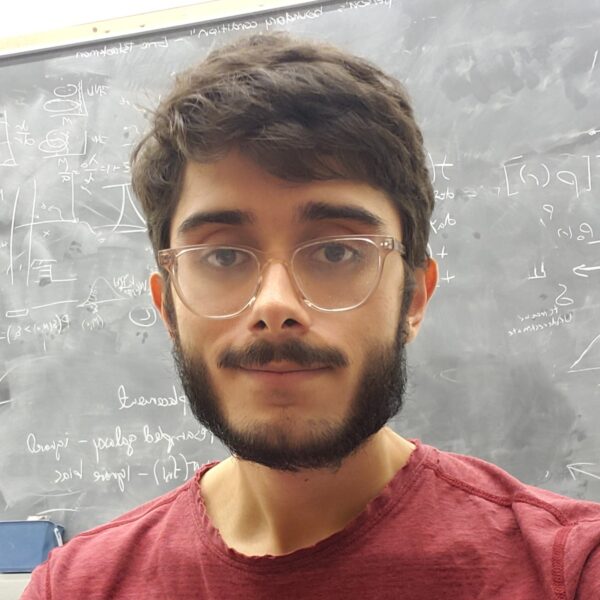
What is your position or role in the DESI project?
I’m a PhD student at the University of Rochester working with my advisors Segev BenZvi and Kelly Douglass. I’m involved with the Galaxy and Quasar Clustering working group and the Alternative Clustering Methods topical group.
Where were you born? Where do you live now?
I was born in Corpus Christi, Texas. I’ve also lived in San Antonio, Texas; Syracuse, New York; Cleveland, Ohio; and now, finally, Rochester, New York.
What do you do as part of DESI?
I’m creating catalogs of cosmic voids. Voids are large regions of the universe that are tens of millions of lightyears across and have very little matter in them. The number of voids of different sizes that we expect to see is affected by the behavior of dark energy, so we can use voids to learn more about dark energy models. I’m using DESI data to map out where the universe’s cosmic voids are located, with the goal of studying dark energy.
What is the most interesting or exciting thing about your job?
I love being able to visualize the universe on its largest size scales. With computer programs, I can illustrate the locations of thousands of voids in the nearby universe, and with DESI’s data, I’ll expand these maps to cover even larger populations of voids at further distances away from us.
Any advice for an aspiring scientist?
Have fun exploring a broad range of topics to get a sense of what you love the most and what you might want to do for a career. When you go to college, try to find other students and friends in your science classes who you can work with and learn from. Science degrees can be difficult to get, but having a community of people who are in it together with you helps a lot.
What do you do for fun?
I like writing science fiction and fantasy novels and short stories.
If you weren’t a scientist, what would be your dream job?
It would be fun to be an author alongside being a scientist.
What excites/interests you most about DESI?
I love that DESI is a huge, worldwide collaboration involving novel science, intricate engineering, in-person collaboration meetings, dedicated science outreach, and fascinating visualizations of survey data. It’s great to be part of such a big project!
